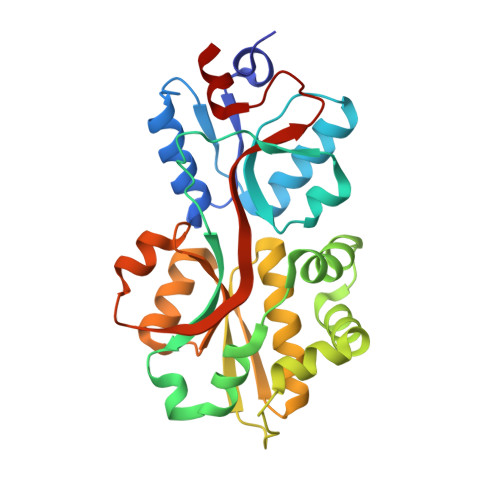Arsenobetaine: an ecophysiologically important organoarsenical confers cytoprotection against osmotic stress and growth temperature extremes.
Hoffmann, T., Warmbold, B., Smits, S.H.J., Tschapek, B., Ronzheimer, S., Bashir, A., Chen, C., Rolbetzki, A., Pittelkow, M., Jebbar, M., Seubert, A., Schmitt, L., Bremer, E.(2018) Environ Microbiol 20: 305-323
- PubMed: 29159878
- DOI: https://doi.org/10.1111/1462-2920.13999
- Primary Citation of Related Structures:
5NXX, 5NXY - PubMed Abstract:
Arsenic, a highly cytotoxic and cancerogenic metalloid, is brought into the biosphere through geochemical sources and anthropogenic activities. A global biogeochemical arsenic biotransformation cycle exists in which inorganic arsenic species are transformed into organoarsenicals, which are subsequently mineralized again into inorganic arsenic compounds. Microorganisms contribute to this biotransformation process greatly and one of the organoarsenicals synthesized and degraded in this cycle is arsenobetaine. Its nitrogen-containing homologue glycine betaine is probably the most frequently used compatible solute on Earth. Arsenobetaine is found in marine and terrestrial habitats and even in deep-sea hydrothermal vent ecosystems. Despite its ubiquitous occurrence, the biological function of arsenobetaine has not been comprehensively addressed. Using Bacillus subtilis as a well-understood platform for the study of microbial osmostress adjustment systems, we ascribe here to arsenobetaine both a protective function against high osmolarity and a cytoprotective role against extremes in low and high growth temperatures. We define a biosynthetic route for arsenobetaine from the precursor arsenocholine that relies on enzymes and genetic regulatory circuits for glycine betaine formation from choline, identify the uptake systems for arsenobetaine and arsenocholine, and describe crystal structures of ligand-binding proteins from the OpuA and OpuB ABC transporters complexed with either arsenobetaine or arsenocholine.
- Laboratory for Microbiology, Department of Biology, Philipps-University Marburg, Karl-von-Frisch Str. 8, Marburg D-35043, Germany.
Organizational Affiliation:

















